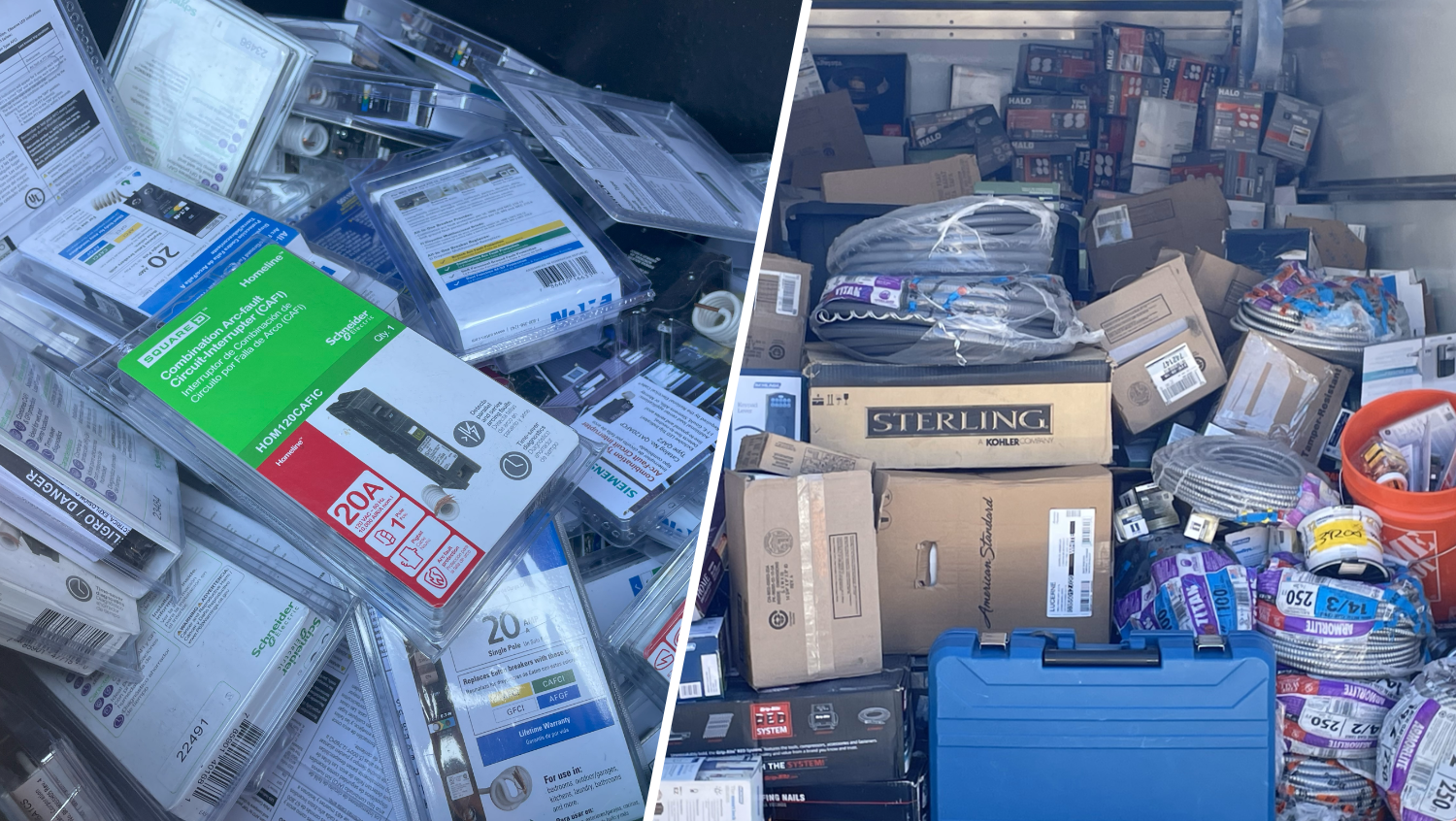We all dream of having the revolutionary idea that makes us successful. In fact, the number of patents filed each year almost doubles every ten years to almost half a million in 2010 alone. Unfortunately, being first to market with a new technology product, even a great product, doesn't necessarily guarantee success.
For your enjoyment, we've compiled a list of "successful" technology firsts that weren't quite so successful in their original incarnation. Whether it was poor marketing, some supporting technology just wasn't "there" yet, or something unforeseen, you have to admire these brave first attempts.
The lessons taught by these technological firsts is all the more apt on this, the day of the iPod's 10 birthday, considering the iPod itself followed in the footsteps of another, now forgotten MP3 player.

1. The Cellular Phone
While people have been connecting two-way radios to telephones for years, the first semi-automated mobile phone network, "Mobile System A," was actually built in 1956 in Sweden. Try to imagine vacuum tubes and a rotary dial in a cellphone — with a mechanical dial you had to turn and release to get a number (as opposed to push buttons all arranged in a circle on the retro copies of old phones).
Why it didn't take off the first time: The earliest phones were very expensive to own and operate. They needed a lot of power, so a handheld device or even a bag phone was out of the question. A car-installed phone was what was considered mobile back in the day. The system was analog and the technology for tower-to-tower hand-off hadn't even been considered yet, so you were limited to the one cell tower once you initiated a call (which kind of defeats the purpose of a "mobile" phone).
Local
Why the successors eventually worked: The microchip and improvements in battery technology meant that the devices could be truly portable for the first time. Two other crucial developments: computer-controlled cellular tower technology, which enables you to travel from cell site to the next without dropping a call (most of the time), and digital signal integration, which enabled carriers to fit 3-6 times the calls on the same number of frequencies.
2. The VCR & Instant Video
There are actually two candidates for this failed first attempt, and one of them isn't even video tape.

Polavision In true Polaroid fashion, the instant 8mm movie film system even looks like a video cassette. Like video tape, this system allowed the recorded media to go directly from camera to viewer.
Why it didn't take off: This ill-fated technology made its debut at almost the same time as the first Beta and VHS players. The Polavision films required a special player due to the light durability, and they were much shorter in duration. — only a few minutes per cassette. You couldn't re-write/record over a film once it was exposed. [Image: Georg Holderied]

U-Matic Video Cassette This much larger format cassette tape (pictured) was released by Sony in 1971.
Why it didn't take off: Sony's monster-sized players (like the BVU-800) cost thousands (in the 1970s) and required a technician to calibrate properly. With a one hour run time on a cassette, and the prohibitively expensive asking price, this product was seen more for commercial use and didn't break into many homes.
Why the successors eventually worked: With a cheaper price point (about $1,000 for the player and $24 for blank cassettes), two to four hour recording lengths (long enough for pre-recorded movies), and re-recordable media, VHS became the leader for almost two decades.
…and I didn't even mention Beta.

3. The MP3 Player
For many, the iPod is synonymous with MP3 player. That's fair given the unit's success, but what plenty of folks don't know is that the first MP3 player was actually the Rio PMP300 in 1998 (or not — see our note below - Ed).
Why it didn't take off: Don't recognize the player above? While it had all the trappings of the more successful iPod, it lacked Apple's marketing genius and design. The small capacity (only 32MB) probably had something to do with its slow take off. You could still hold more music on a portable CD player, which was the closest competitor at the time.
Why the successor eventually worked: The iPod's opening capacity in 2001 was 5GB, towering over the initial offering, followed soon by a 10GB version. Coupled with Apple's elegant interface, the iPod was delivered by a marketing engine that would soon be recognized as one of best in the world.
Editor's Note: As pointed out in the comments below, the Rio PMP300, which enjoys the title of "first MP3 player on the block" far and wide, was actually preceded by Saehan's MPMan. We're preparing a correction, but we wanted to own up to it in the meantime. For now you'll have to settle for then-CNET's-now-Wired's smirking Eliot Van Buskirk for the details.

4. Hybrid (Gasoline/Petrol-Electric) Car
The first hybrid car was actually the "sleek" 1900 Porsche Mixte pictured above. Boasting four-wheel drive, this Porsche had all of 14 horsepower delivered by electric motors at each wheel.
Why it didn't take off: While this design actually ended up as the basis for the lunar rover, the heavy batteries and weaker electric motors couldn't compete with the power of their gasoline driven counterparts — at least on terran roads.
Why the successors eventually worked: Improvements in battery technology like lithium ion considerably reduce the weight and increased the longevity of today's e-vehicles. Also, allowing a gasoline engine to supplement the torque of the electric motors (as opposed to just charging the batteries) enables cars such as the Prius to blend in on a modern highway.

5. Tablet Computers
Apple's first tablet PC was in production from 1987 to 1998 and had all the promise of the iPad in its day. I can remember integrating them into a doctor's UNIX server as mobile terminals in one of my first consulting jobs as a tech at the time. They certainly had some serious potential, but it's the company's iPad that is to the tablet world as the iPod is to MP3 players, not the Newton.
Why it didn't take off: Although it existed for about ten years, it certainly never had the wide appeal of the iPad. Part of that can be attributed to Apple's "iPod-like" marketing strategies not yet being deployed, and part of it can be attributed to the development environment not living up to Apple's expectations (a lot less apps, for one). The Newton's biggest shortcoming, however, could have been a lack of connectivity. The device was very limited once it was undocked to what it could access.
Why the successors eventually worked: On the heels of the successful iPhone/iPod market offerings, Apple's timing of this device didn't follow, but actually started a trend in computing. Powerful (and fast) computers in their own right, like its ancestor, the Apple II, the iPad brought "just enough computer for most people" in a really slick package. With a beautiful display, high-speed connectivity everywhere and loads of apps, the iPad has been drinking from a fire hose compared to its predecessor's very modest success.

6. Edison Cylinder/Record
Did you know the first records were cylinders and not disks? Edison Phonograph Cylinders, made of wax, were sold both pre-etched (pre-recorded) and blank.
Why it didn't take off: Made out of wax and not vinyl, recorded material was extremely fragile. The needle on the player would begin to peel away at the wax on the first playing. The most you could get was about 100 plays on the first incarnation of the media. The cylinders eventually got made of a stronger material that could resist over 100 plays and the format was still used on dictating machines for some years to come, but the trend for recorded music had already been set towards the disk.
Why the successors eventually worked: The record disk, which became the prominent format through the 1970s, was much cheaper to mass produce than cylinders. It used less material in the actual media and packaging. Even though the average consumer couldn't record on the flat format, most recording companies turned to it, attracted by its low cost.

7. The Personal Computer
While the Apple II holds the distinction of leading the PC revolution, they were not the first personal-sized computers to appear on the market. If you've seen the movie Pirates of Silicon Valley, you may remember Bill Gates and his team writing a BASIC interpreter for an Altair.
Why it didn't take off: The Altair was released with no keyboard, monitor or high-level program language interpreter. The term "user friendly" hadn't been thought of yet. Entering data in binary through a series of switches, in fact, could be considered "user hostile." Peripheral devices considered necessities today such as a keyboard could be connected if you were a "hobbyist" and good with a soldering iron, or writing a driver in binary. Read: not Average Joe.
Why the successors eventually worked: A keyboard, monitor, floppy disk drive, and BASIC programming language "out-of-the-box" were clearly factors to make the Apple II the first clear leader as a consumer PC. [Image credit: Microsoft]

8. Video Game Console
Mention the first video game console, and most folks who lived through the 1970s will get misty eyed talking about the good old days of video games on our Atari 2600s. There are even a few who will wax nostalgic in the world of paddle-based and Pong-like games, but when we speak of plug-in-your-cartridge video game consoles, most will agree Atari in 1977 was the first — yet it wasn't.
To be fair, the Odyssey System (1972) by Magnavox had little cartridge-like boards you plugged in, but these didn't contain actual games, just preset switch settings for the paddle-based games already in the console.
The Fairchild Channel F in 1976 was the first honest-to-goodness cartridge game console. Never heard of it? Most people who were in to video games at that time, even — which was almost everyone under 20 — had never heard of it, either.
Why it didn't take off: I actually had one of these. It was outfitted with clunky, awkward controllers, jumpy gameplay and sound that had to come out of the console instead of the TV. It was easy to overlook these negative points amongst the non-existent competition. You could also blame poor marketing: the inability to set a distinction among the inferior paddle games was clearly the biggest part of its failure to launch.
Why the successors eventually worked: Some could say the Atari's success can be attributed to its famous Joystick controller. The real success, however, along with good marketing, can be summed up in two words: Space Invaders. Not just Space Invaders, but the Atari VCS (later renamed the 2600) brought big names from the arcade to the home TV. Like movies that come to video after their stint in the theaters, this huge trend would eventually define the video game market pattern for years to come.
Like the folks waiting on line for the release of the next Apple product, I can remember lining up for the Atari home release of Pac Man. Now, I really feel old.
Success can be defined in a lot of ways. If having a great idea and being able to bring it to market makes you a success, then these are all winners. Hindsight is 20/20, and in many cases, these brave inventor companies may not have had the capital to properly market their achievement, or maybe it was impossible to foresee how one solution would work in the real word. Maybe someone high up in the company just didn't believe enough to advertize well. All criticisms aside, you have to admire these first to market technical achievements for their bravery and innovation.



